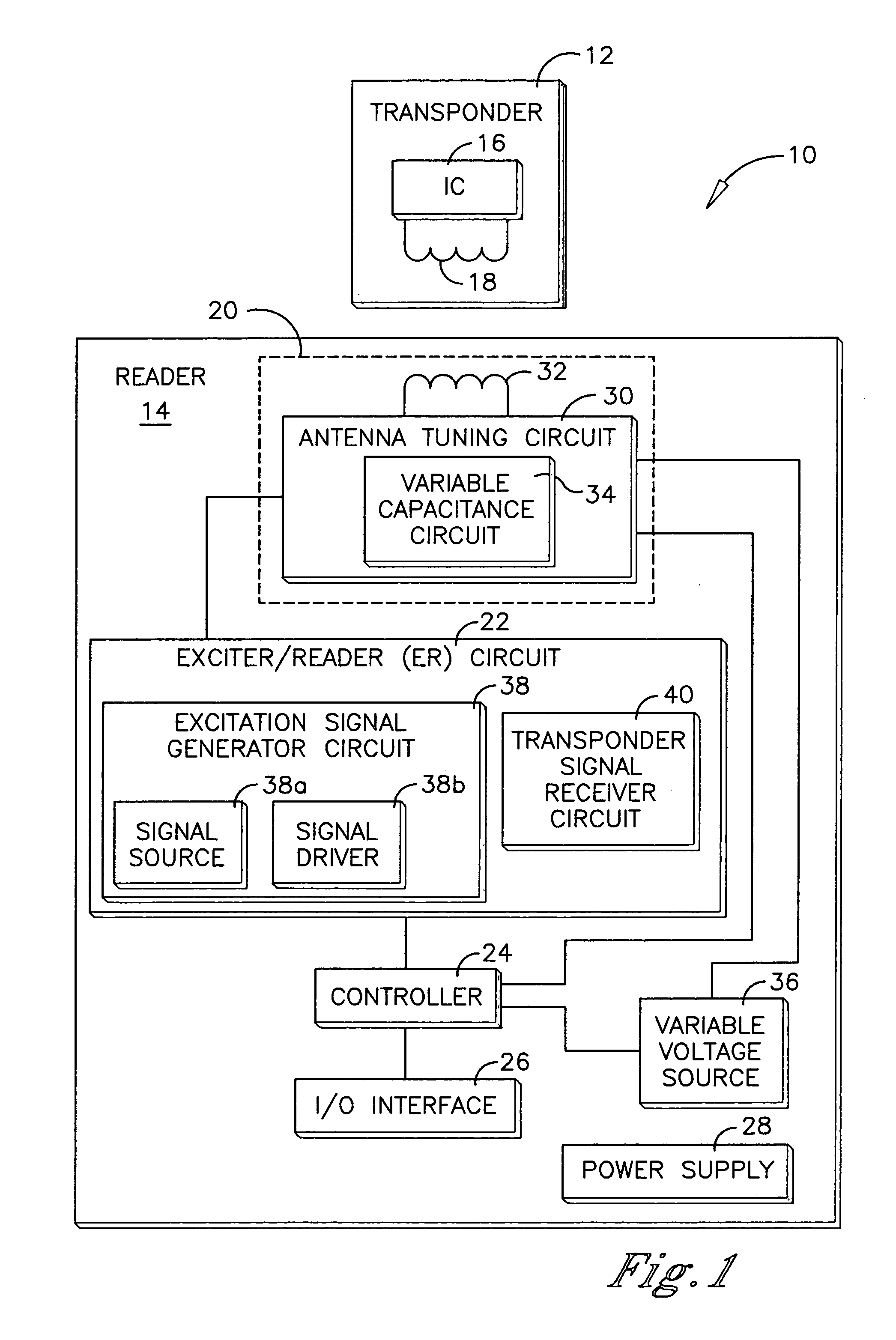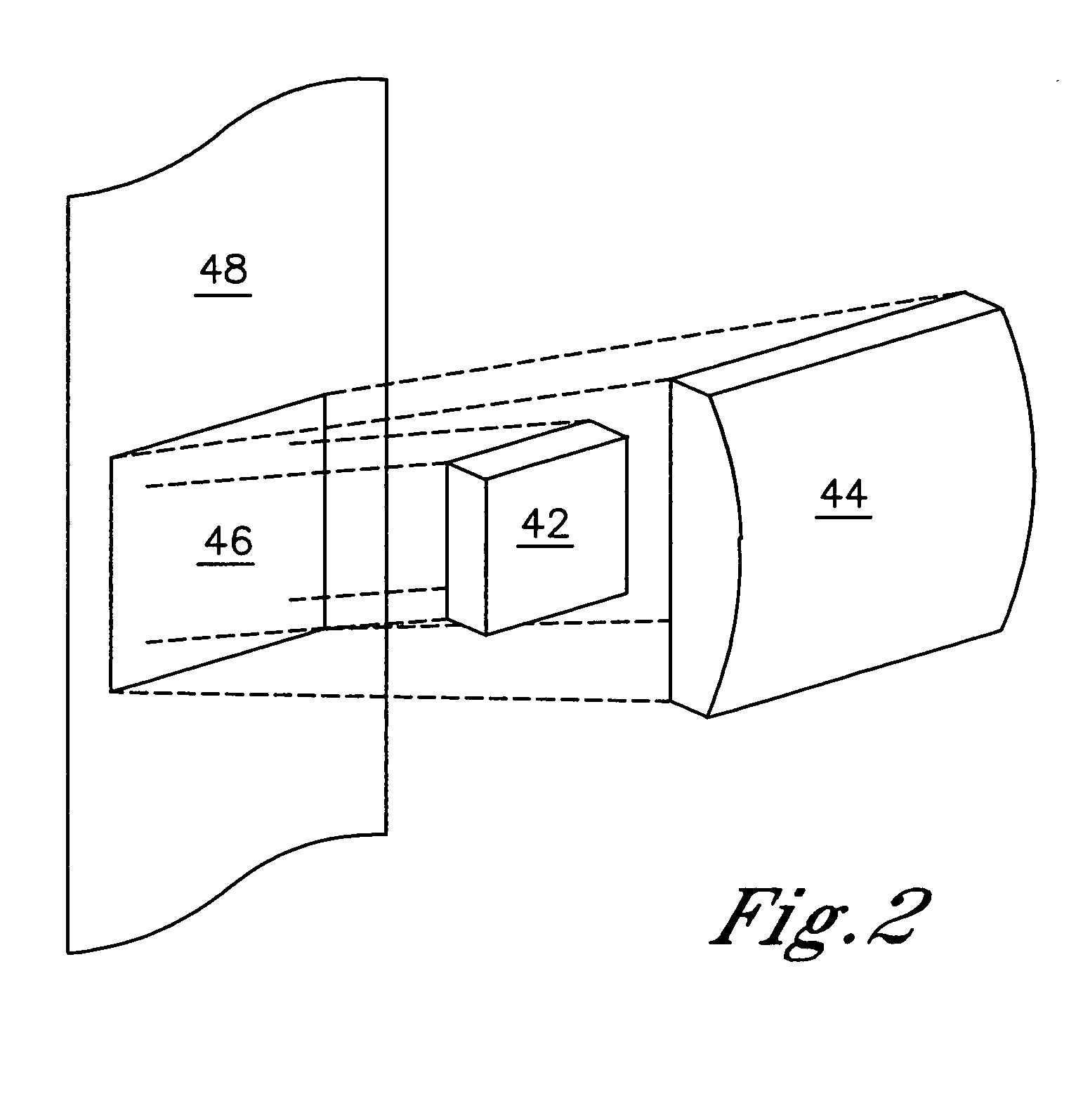Auto-tuned RFID reader antenna
a technology of radio frequency identification and auto-tuned circuit, which is applied in the direction of mechanical actuation of burglar alarms, hand-held items removal, instruments, etc., can solve the problems of reducing the range of readers, detuning the resonant circuit from the predetermined frequency, and affecting the accuracy of the reader
- Summary
- Abstract
- Description
- Claims
- Application Information
AI Technical Summary
Benefits of technology
Problems solved by technology
Method used
Image
Examples
Embodiment Construction
[0026] An RFID system is shown in FIG. 1 and generally designated 10. The RFID system 10 comprises a transponder 12 and a reader 14. The transponder 12 is preferably a passive transponder which does not require an internal power supply. The electrical power required to operate the passive transponder 12 is supplied to the transponder 12 by electromagnetic energy transmitted from the reader 14, which is of a specific frequency and a sufficient strength to power up the transponder 12.
[0027] The transponder 12 comprises a number of functional elements including a transponder integrated circuit (IC) 16 and a transponder antenna 18. The transponder IC 16 embodies the processing and memory capabilities of the transponder 12. The transponder antenna 18 is coupled to the transponder IC 16 and is preferably a conventional coil termed a “dual-function antenna” which performs both the receiving and transmitting functions of the transponder 12. Alternatively, two separate receiving and transmi...
PUM
 Login to View More
Login to View More Abstract
Description
Claims
Application Information
 Login to View More
Login to View More - R&D
- Intellectual Property
- Life Sciences
- Materials
- Tech Scout
- Unparalleled Data Quality
- Higher Quality Content
- 60% Fewer Hallucinations
Browse by: Latest US Patents, China's latest patents, Technical Efficacy Thesaurus, Application Domain, Technology Topic, Popular Technical Reports.
© 2025 PatSnap. All rights reserved.Legal|Privacy policy|Modern Slavery Act Transparency Statement|Sitemap|About US| Contact US: help@patsnap.com



